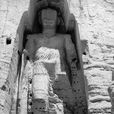基本介紹
- 中文名:巴米揚山谷的文化景觀和考古遺址
- 外文名:The Bamiyan Valley Cultural Landscape and archaeological sites
- 位置:阿富汗中部巴米揚城北
- 意義:現存最大的佛教石窟群
簡介,世界遺產,
簡介
巴米揚石窟位於阿富汗中部巴米揚城北興都庫什山區海拔2590米的小河谷中,它的北面是興都庫什山的支脈代瓦傑山,向南是巴巴山脈,巴米揚河從兩山間流過,巴米揚石窟就開鑿在代瓦傑山南面的斷崖上。
巴米揚石窟擁有兩項世界之最:巴米揚石窟是現存最大的佛教石窟群;巴米揚大佛是世界上最高的古代佛像。巴米揚石窟,全長1300多米,大大小小的洞窟有700多個。巴米揚石窟群中最引人注目的是分別開鑿在東段和西段的兩尊高大的立佛像,兩尊大佛相距400米。東大佛高37米,身披藍色袈裟,西大佛高55米,著紅色袈裟,佛像臉部和雙手均塗有金色。兩尊佛像的兩側均有暗洞,洞高數十米,可拾級而上,直達佛頂,其上平台處可站立百餘人。
巴米揚大佛大約雕鑿於公元4-5世紀間,經歷戰火滄桑。有記載的大規模破壞,前後有4次。第一次發生在阿拉伯帝國的軍隊征服巴米揚期間;第二次是在13世紀初,成吉思汗蒙古大軍的鐵蹄踏上了這塊土地,巴米揚石窟沒有躲過這次戰火的劫難,在梵衍那城陷寺毀後,巴米揚石窟已面目全非;第三次是在19世紀,當帝國主義將戰火燒到阿富汗領土時,占領巴米揚的英軍炮擊了巴米揚石窟的兩尊大佛,從此巴米揚大佛滿目創痍,肢體殘斷。巴米揚大佛最終於2001年3月12日被阿富汗塔利班政權摧毀。
巴米揚佛像群如今一片淒涼。山崖下只是佛像形狀的石窟和佛像的殘骸,石窟外到處是碎石和黃土塊。塞爾薩爾只剩下一個佛像的形狀,佛像巨大的胳膊留下的凹痕清晰可見。佛像不見了,但仰頭而望,仍不難想像當年的壯觀景象。
世界遺產
入選時間:2003年(同時列入瀕危世界遺產)
遴選依據:文化遺產(i)(ii)(iii)(iv)(vi)
地理位置:N34 50 49.984 E67 49 30.900
遺產編號:208rev
遴選依據:文化遺產(i)(ii)(iii)(iv)(vi)
地理位置:N34 50 49.984 E67 49 30.900
遺產編號:208rev
Bamiyan Province, Bamiyan District
N34 50 48.984 E67 49 30.9
Date of Inscription:2003
Inscription Year on theList of World Heritage in Danger:
2003 -Present
Criteria:(i)(ii)(iii)(iv)(vi)
Ref:208rev
遴選依據:
(i)The Buddha statues and the cave art in Bamiyan Valley are an outstanding representation of the Gandharan school in Buddhist art in the Central Asian region.
(ii)The artistic and architectural remains of Bamiyan Valley, an important Buddhist centre on the Silk Road, are an exceptional testimony to the interchange of Indian, Hellenistic, Roman and Sasanian influences as the basis for the development of a particular artistic expression in the Gandharan school. To this can be added the Islamic influence in a later period.
(iii)The Bamiyan Valley bears an exceptional testimony to a cultural tradition in the Central Asian region, which has disappeared.
(iv)The Bamiyan Valley is an outstanding example of a cultural landscape which illustrates a significant period in Buddhism.
(vi)The Bamiyan Valley is the most monumental expression of the western Buddhism. It was an important centre of pilgrimage over many centuries. Due to their symbolic values, the monuments have suffered at different times of their existence, including the deliberate destruction in 2001, which shook the whole world.
世界遺產委員會評價:
巴米揚山谷的文化景觀和考古遺址向世人展示了從公元1世紀至13世紀期間以古代巴克特里亞文化為特徵的藝術和宗教發展。正是在這一發展過程中,佛教藝術的乾達拉流派兼收並蓄了各種文化影響。這一地區匯集了大量的佛教寺院、廟宇,以及伊斯蘭教時期的防禦建築。
The cultural landscape and archaeological remains of the Bamiyan Valley represent the artistic and religious developments which from the 1st to the 13th centuries characterized ancient Bakhtria, integrating various cultural influences into the Gandhara school of Buddhist art. The area contains numerous Buddhist monastic ensembles and sanctuaries, as well as fortified edifices from the Islamic period. The site is also testimony to the tragic destruction by the Taliban of the two standing Buddha statues, which shook the world in March 2001.

